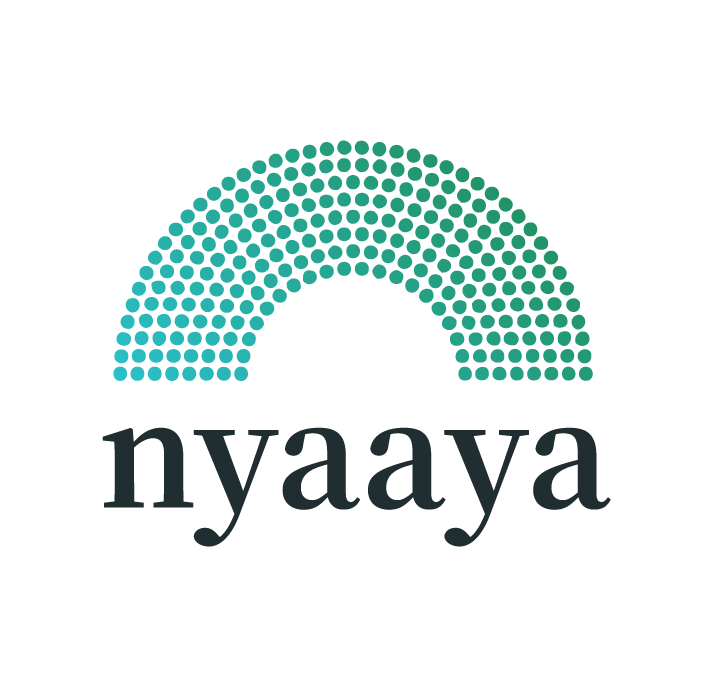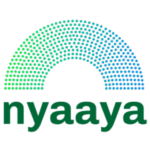By Shusrut Kaplay


With rising border tensions between India and China, the Indian Government on 29th June banned 59 mobile applications of Chinese origin.1 The apps include popular apps like ShareIt, Tiktok, CamScanner, UC Browser, Club Factory, etc.
The Ministry of Electronics and Information Technology (MeitY)2 stated that the ban was necessary to safeguard the ‘sovereignty and integrity of India’. It further said that the Government had received multiple complaints from various sources indicating that the apps were being misused for stealing and circulating private data outside India. However, the official comments do not expressly state that the ban is a part of a geopolitical strategy or is an act of retaliation against the Chinese Government.
What is Section 69 A of the IT Act?
The ban was imposed under Section 69A of the Information and Technology Act, 2000 (IT Act). Under Section 69A, the Government is empowered to block public access of any computer resource (including computer networks, data, database and software) for certain acceptable reasons.
Section 69A allows the Government to impose reasonable restrictions on free speech over the internet by virtue of Article 19(2) of the Constitution. This section of the IT Act falls within the scope of these reasonable restrictions.
Thus, Section 69A empowers the government to exercise its banning power when it becomes necessary for the following 6 reasons: a) sovereignty and integrity of India, b) defense of India, c) security of the country, d) friendly relations with foreign countries, e) public order or f) preventing the instigation of an offence related to the reasons above.
Section 69A has been challenged as being unconstitutional and against the fundamental right of free speech. However, in the case of Shreya Singhal v. Union of India, the Court upheld the constitutionality Section 69A and stated that it has adequate safeguards.3 The process for blocking under Section 69A is largely executive driven and mandates that confidentiality is maintained regarding the blocking, making it a secretive blocking procedure. However, with respect to this provision, the Supreme Court said that there are sufficient checks and balances built in place.4
What is the procedure for blocking apps?
The procedure for imposing bans under Section 69A is given in the Information Technology (Procedure and Safeguards for Blocking for Access of Information by Public) Rules, 2009 (‘Blocking Rules’)5.
As per these Blocking Rules, the government can enforce blocking in two ways depending on whether the situation is a normal one or an emergency.6
Normal route:
A designated officer (rank of Joint Secretary or above) is empowered to issue a direction of blocking under the said Rules. However, he can only do so once a complaint is forwarded to him by the nodal officer. After receiving such a complaint, the same is examined by a Committee of Government Personnel.
The Committee identifies the originator or the intermediary which filed the complaint. Simply put, an intermediary is an entity which provides a platform for the exchange of information/content between users on its platform; without exercising any control over it. The stepwise process after this is given below:
● The intermediary will appear before the Committee and will have a right to be heard.
● The Committee will evaluate whether the blocking request fulfills the criteria under Section 69A.
● If the criteria is satisfied, the designated officer will recommend blocking to the Secretary, Department of IT who will then issue the direction for blocking.7
Emergency route:
Rule 9 of the Blocking Rules lay down the procedure when the blocking may be done without any hearing given to the intermediary. This rule can be applied in cases of emergency situations where no delay is acceptable.8 The stepwise process is explained below:
● The designated officer can make a request to the Secretary, Department of IT.
● The Secretary can issue directions on this basis itself.
There is no requirement to give a hearing to the intermediary in such a case. After such direction has been given, the order has to be placed before the government committee within 48 hours so that it can either be finalised or stopped.
A Review Committee has to meet once every two months and the findings regarding directions for blocking (issued under both normal and emergency circumstances) have to be recorded in such meetings.9
Transparency in Section 69A Proceedings?
Rule 16 requires strict confidentiality regarding the complaints and actions taken, and on deciding whether the proceedings should be made public or not.10 However, experts believe that this obligation to maintain confidentiality is on the intermediaries and that the government should disclose the orders in the interests of transparency and accountability.11 In a recent case, the Supreme Court ruled that internet suspension orders have to be published since it is the way in which the reasons behind the decision can be evaluated.12
China’s National Intelligence Law requires all citizens and corporations to co-operate with intelligence-gathering efforts of China and mandates that they maintain secrecy about the same. While it has not been stated in the press release that this may be the reason for the current ban, however had this been the case, all Chinese apps should have been banned.13
Whether Section 69A can be used for data protection concerns?
The press release states that the apps were banned to achieve data protection compliance and to resolve data security and privacy concerns.
Section 69A is not crafted to cater to data harvesting, data privacy or security concerns. There is a separate provision to deal with the privacy violations and the government is yet to bring in a data protection law to specifically deal with such instances.
What is Section 69A normally used for?
Section 69A is basically a tool to regulate content and to deal with offensive content by blocking access to it. The provision is crafted to deal with particular violations by individual apps and not general violations by a group of apps. Therefore, this ban of 59 apps needs an evidence-based examination of the alleged content violations by each app.
The press release does not give any details of any content-related issue found with the apps. Normally, the use of Section 69A has been done for taking down content hosted by the intermediaries. The intermediaries are given a direction to take down content/information which is found to be violative of the law. It is unclear whether the provision can be used to ban the intermediary altogether.
The emergency procedure appears to have been used under Rule 9 since the press release uses terms like ‘emergent nature of threats’ and ‘immediate concern which requires emergency measures’. The order may also be a temporary order as a statement by the head of Tiktok has termed the order as an interim order and said that the company has been given an opportunity to respond and submit clarifications.
While the government can claim that there is no obligation under the Blocking Rules to disclose the order, the true purpose of the confidentiality clause is to protect the identities of the complainants. Keeping this in mind, the government should reveal the reasons for the ban in the interest of transparency.
Conclusion
It is very unlikely that the affected companies like Tiktok, Tencent, etc. may take any step against the present ban immediately, but they can challenge the blocking orders in court. However, as per the Rules, the companies would have to first present their case before the Committee of Government Personnel. If the companies approach the court, the court will then decide upon the sufficiency of the reasoning and explanation provided by the government in this ban. It would then be on the government to provide a reasonable connection between the activities engaged in by the apps and the reasons for their ban.
Any restriction on fundamental rights of individuals has to be proved necessary to achieve the aim of the law. If this proportionality is absent, then such measures would be deemed to be restrictive in nature. The court would examine the proportionality and necessity of the steps that have been taken in the present scenario.
The data protection concerns as given in the press release of the MeitY are of prime significance, but the present Indian law may not be able to deal with these concerns. Hence, a specific data protection law to deal with data privacy is the need of the hour.
Sushrut Kaplay is a student at NALSAR University of Law, Hyderabad and a member of Kautilya Society, an initiative of Vidhi Centre for Legal Policy. Views are personal.
- ‘Ban on 59 Chinese apps for safety, security and integrity of India’, says government; Hindustan Times; https://www.hindustantimes.com/india-news/ban-on-59-chinese-apps-for-safety-security-and-integrity-of-india-says-government/story-2xjSwEyflOTrXjGvk4ymgK.html.[↩]
- Government Bans 59 mobile apps which are prejudicial to sovereignty and integrity of India, defence of India, security of state and public order, PIB Delhi; https://pib.gov.in/PressReleseDetailm.aspx?PRID=1635206.[↩]
- Nikhil Pahwa, Why Section 69A of the IT Act should have been changed by the Supreme Court, Medianama; https://www.medianama.com/2015/03/223-section-69-it-act-india/.[↩]
- Shreya Singhal v. Union of India, 2013 (12) SCC 73.[↩]
- https://meity.gov.in/writereaddata/files/Information%20Technology%20%28%20Procedure%20and%20safeguards%20for%20blocking%20for%20access%20of%20information%20by%20public%29%20Rules%2C%202009.pdf.[↩]
- Information Technology (Procedure and Safeguards for Blocking for Access of Information by Public) Rules, 2009.[↩]
- Rule 8, Blocking Rules.[↩]
- Rule 9, Blocking Rules.[↩]
- Rule 14, Blocking Rules.[↩]
- Rule 16, Blocking Rules.[↩]
- K Bharat Kumar, The Hindu Explains | What will be the impact of Chinese apps ban?; TheHindu; https://www.thehindu.com/news/national/the-hindu-explains-what-will-be-the-impact-of-chinese-apps-ban/article31991127.ece.[↩]
- Anuradha Bhasin v. Union of India, 2020 (3) SCC 637.[↩]
- Anupriya Dhonchak & Nikhil Purohit, Is India’s ban on Tiktok and 58 other Chinese apps consistent with the provisions of IT Act?; Scroll; https://scroll.in/article/966131/is-indias-ban-on-tiktok-and-58-other-chinese-apps-consistent-with-the-provisions-of-it-act.[↩]


